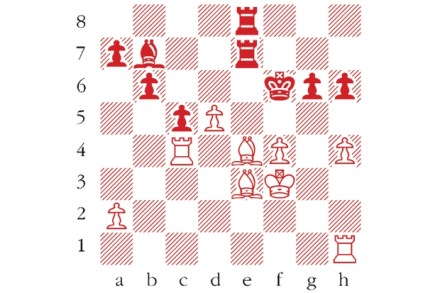No. 375
Black to play. This position is from Kosmo-Smerdon, Goa 2002. Can you spot Black’s beautiful winning move? Answers to me at The Spectator by Tuesday 25 August or via email to victoria@spectator.co.uk or by fax on 020 7681 3773. The winner will be the first correct answer out of a hat, and each week there





















